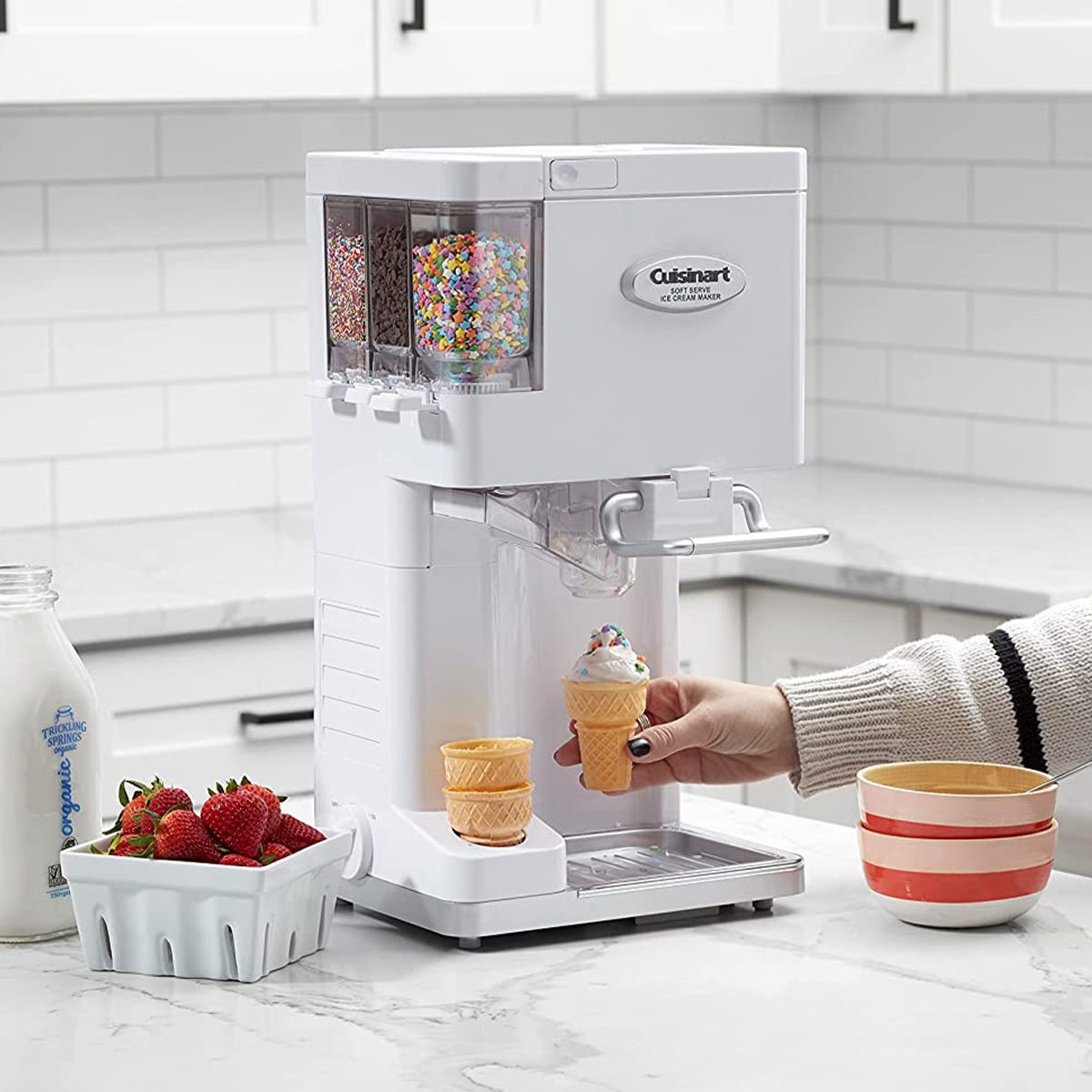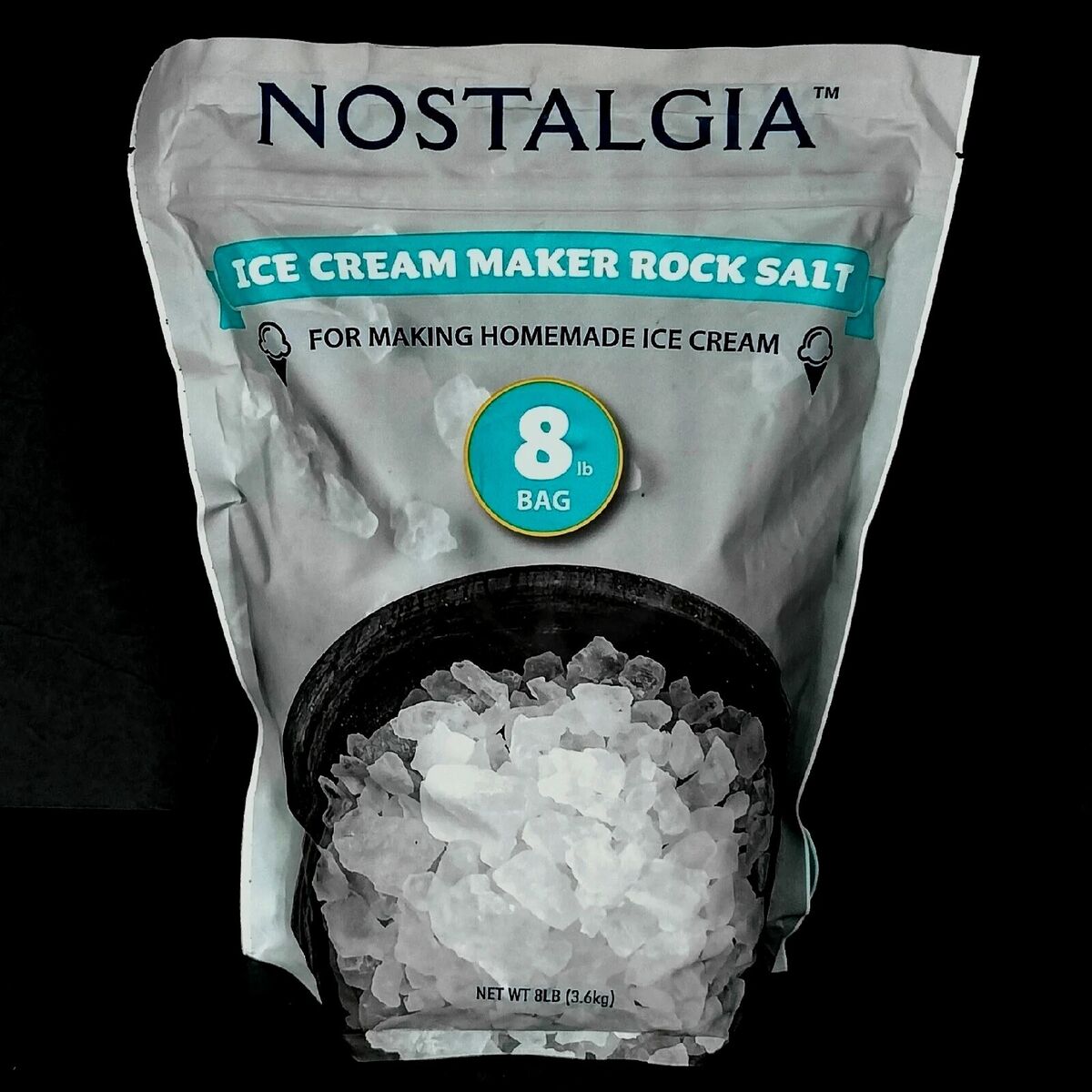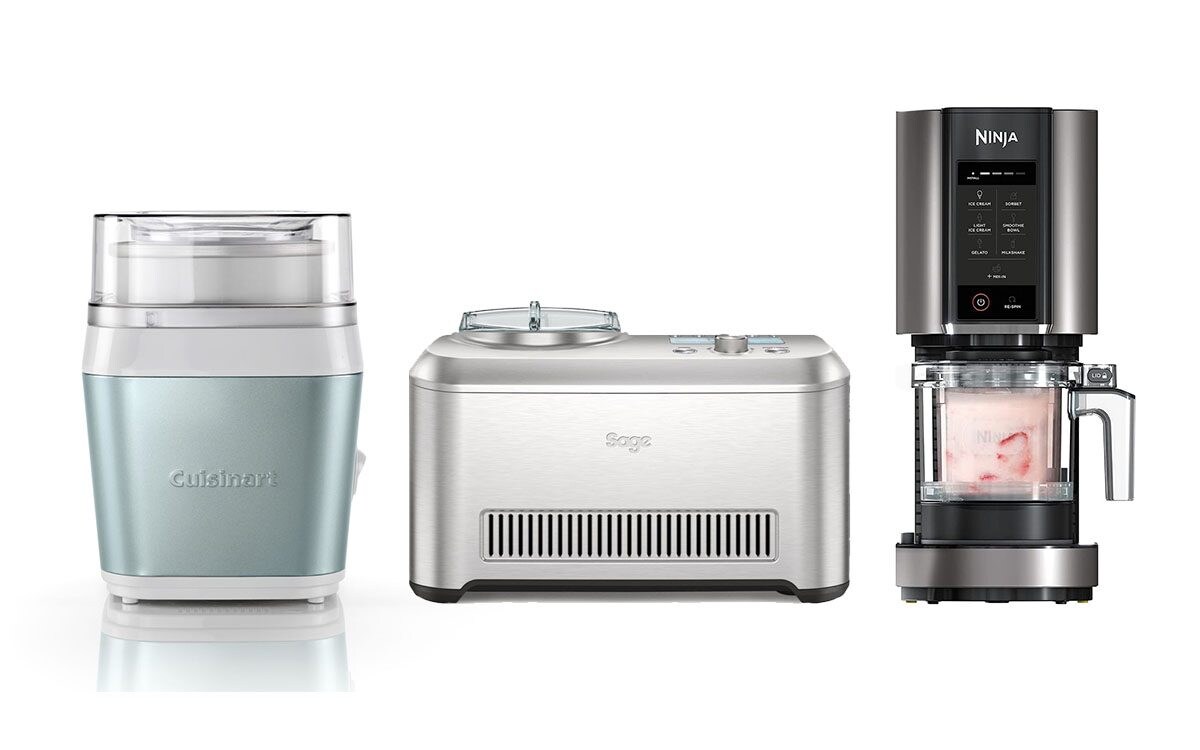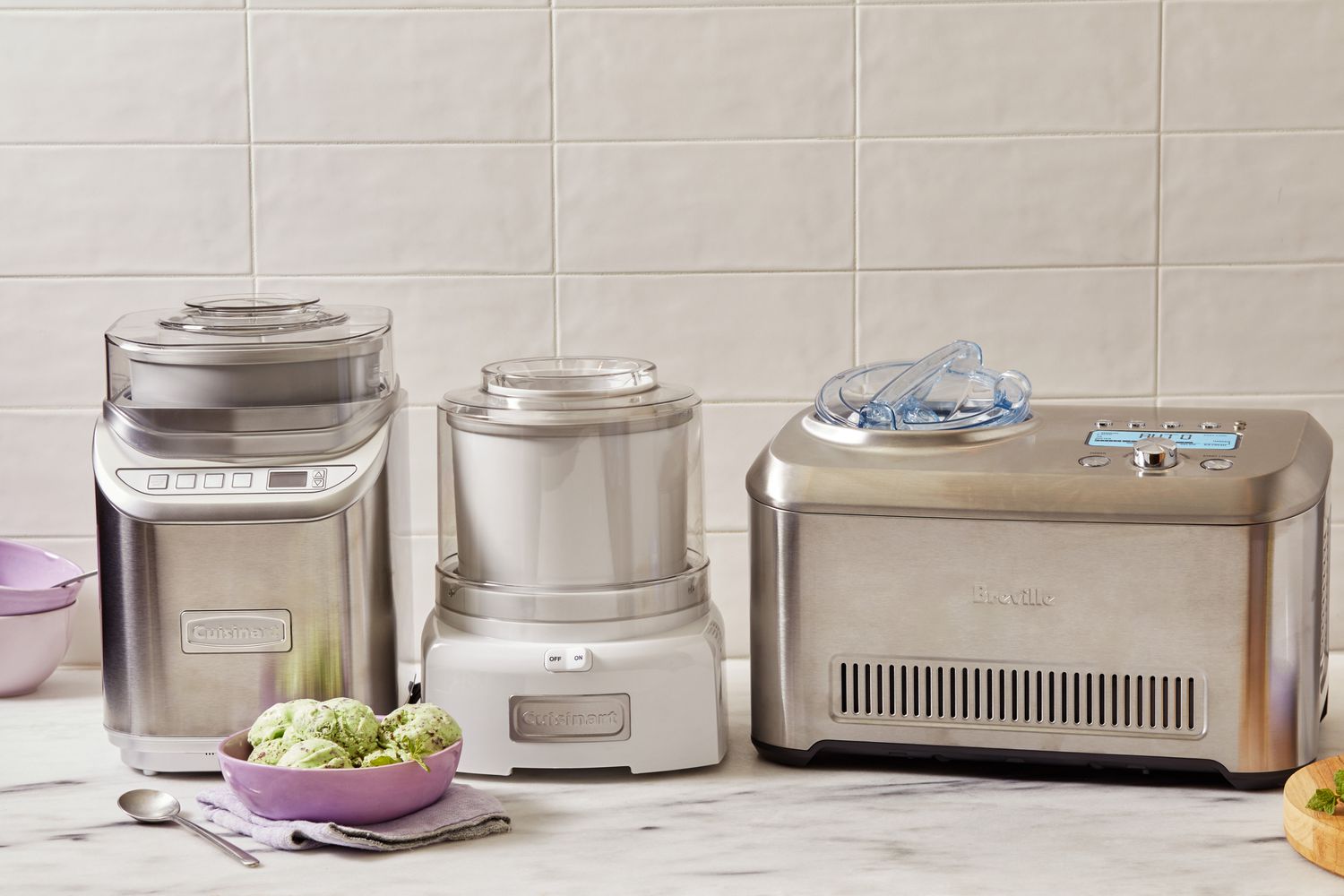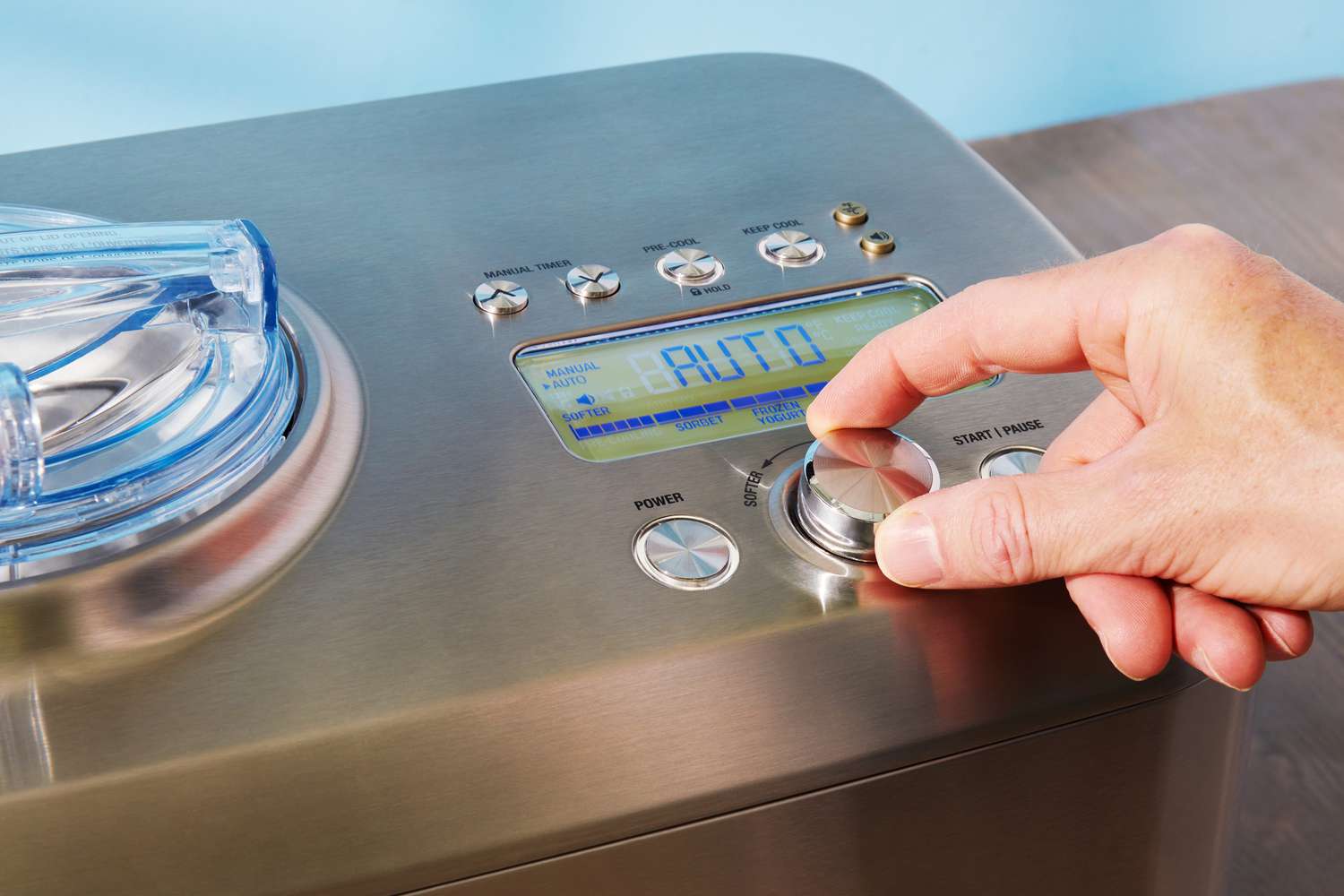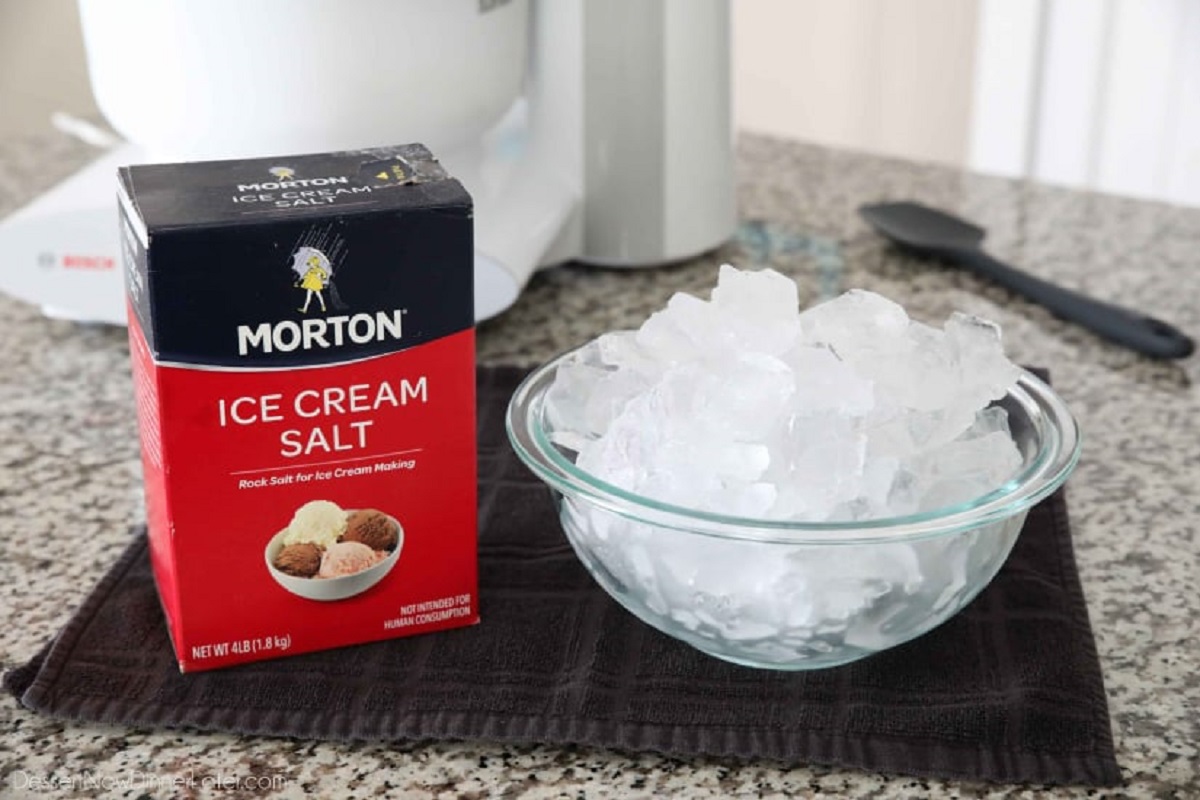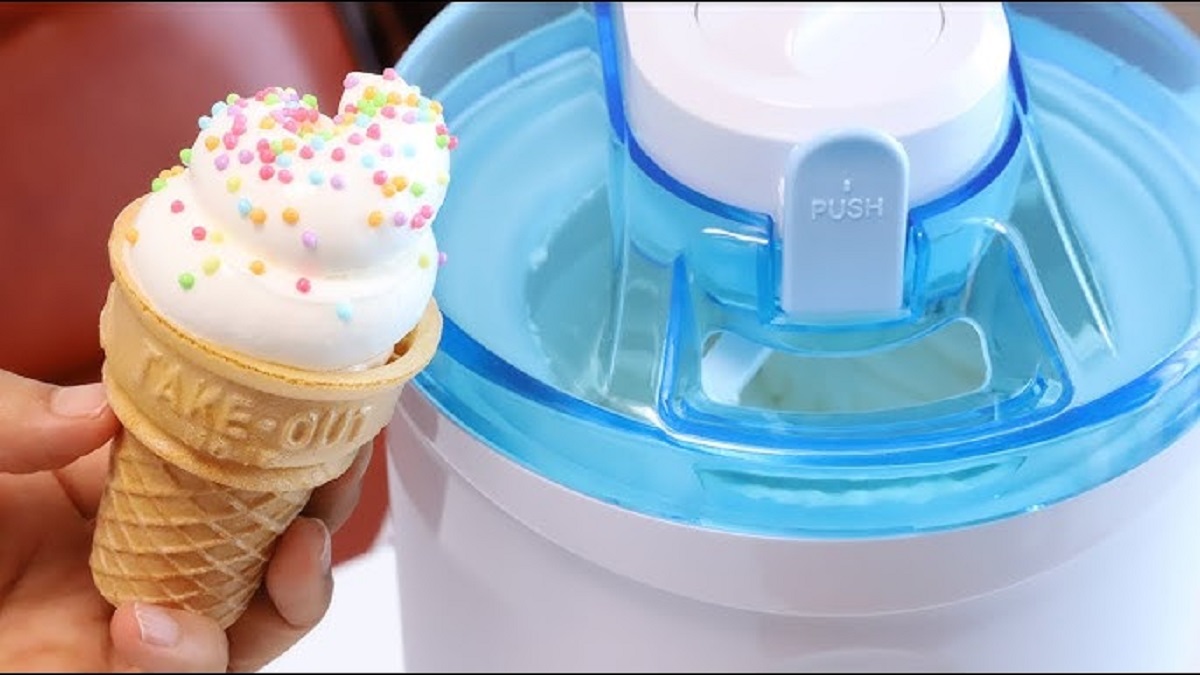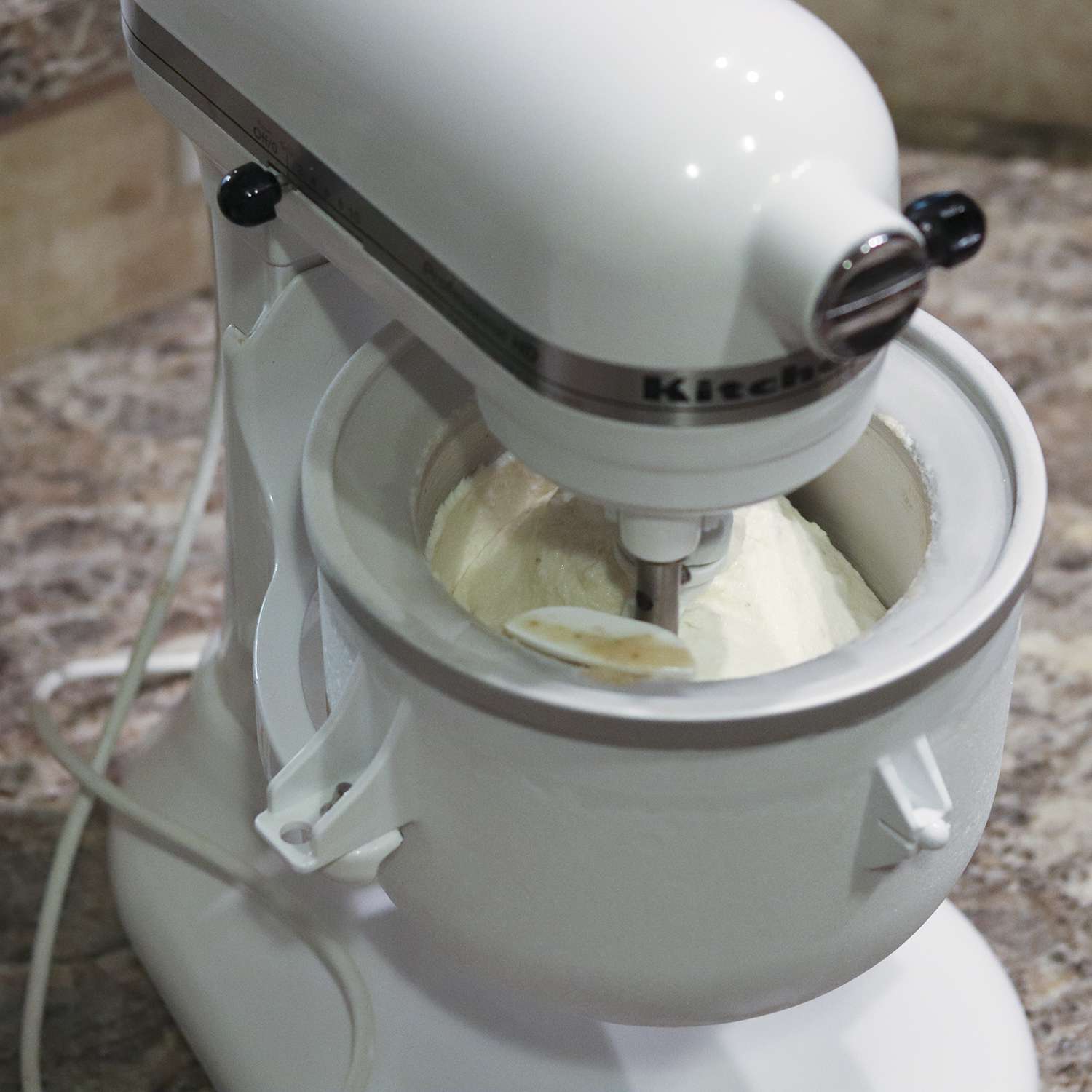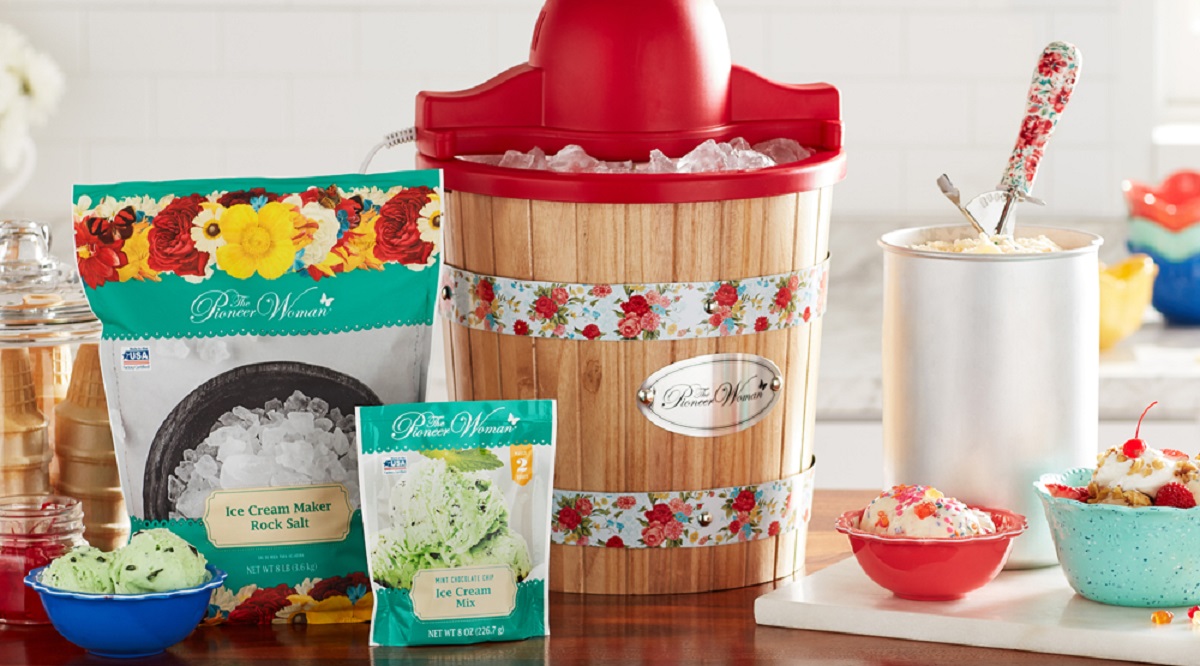Introduction
Welcome to the delicious world of homemade ice cream! There’s nothing quite like the creamy and indulgent taste of freshly churned ice cream, and with the right equipment and ingredients, you can experience it right in the comfort of your own home. Whether you’re an ice cream connoisseur or just starting out on your ice cream making journey, this article will guide you through everything you need to know to get the most out of your ice cream maker.
Homemade ice cream not only allows you to customize the flavors to your preferences but also gives you the opportunity to experiment with unique combinations and fresh ingredients. But before you dive into the world of ice cream making, there are a few things you need to consider. From choosing the right ice cream maker to gathering the necessary ingredients and tools, let’s explore the essential elements that will help you create delectable frozen treats.
Whether you prefer the traditional hand-cranked models or the more modern electric versions, choosing the right ice cream maker is crucial. The type of ice cream maker you select will determine the texture and consistency of your ice cream. Manual machines require more time and effort but offer a nostalgic and hands-on experience. Electric machines, on the other hand, provide convenience and faster results.
No matter which machine you choose, the basic ingredients for making ice cream remain the same. You’ll need a combination of milk or cream, sugar, and flavorings such as vanilla extract or cocoa powder. These simple ingredients form the base of your ice cream but can be modified to suit your taste preferences.
While the basic ingredients are essential, you can take your homemade ice cream to the next level by incorporating additional ingredients and mix-ins. From fresh fruits and nuts to chocolate chips and cookie dough, the possibilities are endless. These add-ins not only enhance the flavor but also provide different textures and surprises with every bite.
To make the ice cream making process more seamless, there are a few tools and equipment items that are highly recommended. A sturdy mixing bowl, a whisk or spatula, an ice cream scoop, and storage containers are must-haves for any aspiring ice cream maker. These tools aid in the mixing, portioning, and storing of your delicious creations.
When it comes to recipe inspiration, having a collection of recipe books dedicated to ice cream can be invaluable. These books offer a wide range of flavors and techniques, allowing you to explore new recipes and unleash your creativity. Some popular recipe books include “The Perfect Scoop” by David Lebovitz and “Jeni’s Splendid Ice Creams at Home” by Jeni Britton Bauer.
As you embark on your ice cream making journey, it’s important to keep in mind a few tips and tricks to ensure great results. From properly chilling your ingredients to utilizing the right techniques for churning, these insights can make a significant difference in the quality and texture of your ice cream.
Finally, once you’ve enjoyed your homemade ice cream, it’s essential to clean and store your ice cream maker properly. By following the manufacturer’s instructions and practicing good maintenance habits, you can prolong the lifespan of your machine and keep it in excellent working condition for many batches to come.
With all of this information in hand, you’re ready to dive into the world of homemade ice cream and become an ice cream making pro. So gather your favorite ingredients, unleash your creativity, and get ready to savor the sweet rewards of your very own frozen creations!
Choosing the Right Ice Cream Maker
When it comes to choosing the right ice cream maker, there are a few factors to consider that can greatly impact your ice cream making experience. The type of machine you select will determine the ease of use, the texture of your ice cream, and the time it takes to churn your frozen treats.
One option is the traditional hand-cranked ice cream maker. These machines have a nostalgic appeal and allow you to actively participate in the ice cream making process. They consist of a metal or wooden bucket, a churn, and a crank handle. You simply add your ingredients, turn the handle to churn the mixture, and watch as your ice cream comes together. Hand-cranked ice cream makers require more effort and time compared to other types, but they offer the satisfaction of a hands-on approach and can be a fun activity for the whole family.
If convenience is a priority for you, an electric ice cream maker may be a better option. These machines consist of a freezing canister or bowl that needs to be chilled in the freezer prior to use, a motorized churn, and a lid. The advantage of electric ice cream makers is that they streamline the churning process and significantly reduce the manual effort required. With just the push of a button, the machine takes care of the churning, leaving you free to attend to other tasks. Electric ice cream makers are also generally faster than hand-cranked models, allowing you to enjoy your homemade ice cream in less time.
Another consideration when choosing an ice cream maker is the capacity. Ice cream makers come in various sizes, ranging from small personal models that make individual servings to larger machines that can churn multiple quarts of ice cream at once. Think about how much ice cream you plan to make and consider the amount of freezer space you have available to accommodate the machine. If you know you’ll be making ice cream for gatherings or parties, a larger capacity machine may be worth considering.
It’s also important to look for additional features that can enhance your ice cream making experience. Some ice cream makers come with built-in timers, which can be helpful in ensuring that you churn your ice cream for the optimal amount of time. Other models may have a pre-freeze function that eliminates the need for a separate freezing canister, saving you time and freezer space.
Lastly, consider your budget when evaluating ice cream maker options. Hand-cranked models tend to be more affordable, while electric machines with advanced features can be pricier. Determine how much you’re willing to invest in an ice cream maker, and remember that it’s a long-term investment that can bring years of delicious frozen desserts.
To make an informed decision, read reviews, compare different models, and consider the specific needs and preferences of your household. Whether you opt for a hand-cranked or electric ice cream maker, selecting the right machine will set the foundation for your ice cream making adventures.
Basic Ingredients
When it comes to making delicious homemade ice cream, having the right ingredients is key. While the specific recipes may vary, there are some basic ingredients that are essential in creating the creamy and flavorful base of your frozen treat.
The primary ingredients for making ice cream include milk or cream, sugar, and flavorings. The milk or cream serves as the base of your ice cream and provides the rich and creamy texture. You can choose to use whole milk, heavy cream, or a combination of the two, depending on the desired richness and creaminess of your ice cream.
Sugar is added to sweeten the ice cream and balance out the flavors. The amount of sugar needed will depend on personal preference and the sweetness of the other ingredients used. Granulated sugar is the most common type used, but you can also experiment with alternatives like brown sugar or honey for a different flavor profile.
Flavorings are the magic touch that adds the unique taste to your ice cream. The most classic flavoring is vanilla extract, but the possibilities are endless. You can use cocoa powder for chocolate ice cream, fruit extracts or purees for fruity flavors, or even infuse herbs and spices for a more adventurous twist. Don’t be afraid to get creative and experiment with different combinations to discover your favorite flavors.
While these are the basic ingredients for making ice cream, it’s important to note that the proportions and techniques may vary depending on the recipe you’re using. Some recipes may call for eggs, which add richness and thickness to the ice cream. Others may include stabilizers like cornstarch or gelatin to improve the texture and prevent ice crystals from forming.
For those who have dietary restrictions or preferences, there are also alternative ingredients available. Dairy-free ice creams can be made using plant-based milks like almond milk, coconut milk, or soy milk. Sugar substitutes like stevia or erythritol can be used for those looking to reduce their sugar intake. The beauty of homemade ice cream is that you have the freedom to customize it to suit your dietary needs and taste preferences.
Remember that using high-quality ingredients will contribute to the overall taste and texture of your homemade ice cream. Fresh and organic milk or cream, pure vanilla extract, and natural flavorings will elevate the flavor profile of your frozen treat. Be sure to taste as you go and make adjustments as needed to achieve the perfect balance of sweetness and flavor.
With these basic ingredients in your pantry, you’re ready to start creating your own delicious ice cream flavors. Next, let’s explore some additional ingredients and mix-ins that can take your homemade ice cream to the next level.
Additional Ingredients and Mix-ins
While the basic ingredients form the foundation of your homemade ice cream, adding additional ingredients and mix-ins is where you can really get creative and elevate the flavors and textures of your frozen creations. These extras can turn a simple ice cream into a gourmet delight, and the possibilities are limited only by your imagination.
One of the simplest ways to enhance the flavor of your ice cream is by incorporating fresh fruits. Whether it’s berries, peaches, mangoes, or bananas, the natural sweetness and vibrant colors of fruits can transform your ice cream into a refreshing and fruity treat. You can choose to puree the fruits and mix them into the ice cream base or chop them into small pieces to create bursts of flavor in every bite.
Nuts are another popular addition to ice cream, providing a satisfying crunch and a hint of richness. Options like chopped almonds, walnuts, pistachios, or toasted pecans can add a delightful contrast to the smoothness of the ice cream. You can either mix the nuts directly into the ice cream base or sprinkle them on top as a garnish.
If you’re a fan of chocolate, there are endless ways to incorporate it into your ice cream. You can add cocoa powder for a rich and intense chocolate flavor or chop up your favorite chocolate bar and mix it into the base. For a textural twist, you can also consider adding chocolate chips, chunks, or even drizzling melted chocolate over the finished ice cream.
Besides fruits, nuts, and chocolate, you can experiment with various other mix-ins to create unique and interesting flavors. Consider adding cookies, brownie chunks, caramel swirls, marshmallows, or pieces of your favorite candies. The combination of creamy ice cream with these delectable goodies will add a fun and surprising element to every spoonful.
Don’t forget about those special flavorings and extracts that can elevate your ice cream to new heights. Add a splash of peppermint extract to your chocolate ice cream for a refreshing twist, or infuse herbs like lavender or basil for a unique and herbal flavor profile. Extracts like almond or coconut can also create a delightful base for tropical or nutty ice cream varieties.
Remember to consider the texture and consistency of the mix-ins as well. Some ingredients, like fresh fruits or cookies, may become softer as they freeze, while others, like nuts or chocolate chunks, maintain their crunchiness. Mixing a variety of textures can create a more dynamic and enjoyable eating experience.
When it comes to the quantity of mix-ins, the ratio will depend on personal preference. Generally, adding around 1 cup of mix-ins to each quart of ice cream will provide a good balance. However, feel free to adjust the amount to suit your taste. You can go for a more generous amount of mix-ins for a loaded ice cream or a more subtle incorporation for a smoother and more balanced flavor.
By adding additional ingredients and mix-ins, you can turn a simple scoop of ice cream into a culinary masterpiece. So let your creativity run wild, explore different combinations, and surprise your taste buds with homemade ice cream flavors that are truly one-of-a-kind!
Essential Tools and Equipment
Creating delicious homemade ice cream requires the right tools and equipment to ensure that the process goes smoothly and the end result is nothing short of perfection. While some items are essential, others can greatly enhance your ice cream making experience. Here are the must-have tools and equipment that every aspiring ice cream maker should have:
1. Mixing Bowl: A sturdy mixing bowl is essential for combining your ice cream ingredients. Opt for a bowl that is large enough to accommodate the volume of your ice cream base and allows room for mixing without spilling over. Stainless steel or glass bowls are ideal as they retain the cold temperature better.
2. Whisk or Spatula: A whisk or spatula is necessary for stirring and mixing your ice cream base, ensuring that all the ingredients are well combined. A balloon whisk works well for incorporating air and creating a smooth texture, while a silicone spatula is great for scraping down the sides of the bowl and ensuring no lumps are left behind.
3. Ice Cream Maker: Of course, an ice cream maker is the star of the show. Whether you choose a hand-cranked or electric model, having a dedicated ice cream maker makes the process much easier and more efficient. Look for a machine with a freezer bowl or canister that can be chilled in advance and is large enough to hold the quantity of ice cream you plan to make.
4. Ice Cream Scoop: An ice cream scoop is a handy tool for portioning out your frozen treat. Look for a scoop with a comfortable grip and a sharp edge, which helps create perfectly round and smooth scoops. Additionally, consider getting a scoop with a mechanical release mechanism for easier serving.
5. Storage Containers: Once your ice cream is made, you’ll need proper containers for storing it in the freezer. Opt for airtight containers or freezer-safe tubs to prevent freezer burn and maintain the freshness of your ice cream. It’s a good idea to have a variety of container sizes to accommodate different batch sizes and flavors.
6. Freezer Thermometer: Maintaining the optimal temperature in your freezer is crucial for achieving the best texture and consistency of your ice cream. A freezer thermometer allows you to monitor the temperature and ensure that it stays at the ideal range for freezing your ice cream properly.
7. Cooling Rack: After churning your ice cream, it’s essential to cool it down before transferring it to the freezer. A cooling rack allows air to circulate around the containers, helping the ice cream cool and solidify faster. This step helps prevent ice crystals from forming and ensures a smooth and creamy texture.
8. Ice Cream Containers: If you plan to gift your homemade ice cream or serve it in a more professional manner, investing in ice cream containers can be a great idea. These containers are specially designed for storing and presenting frozen desserts, and they often come with lids to protect the ice cream from airflow.
9. Almond or Cookie Stencils: To add a decorative touch to your ice cream desserts, consider having almond or cookie stencils on hand. These stencils allow you to create beautiful designs on top of your scoops, adding a visually appealing element to your homemade treats.
These essential tools and equipment will set you up for success in making homemade ice cream. However, don’t be afraid to get creative and explore additional gadgets or accessories that can make your ice cream making experience even more enjoyable. With the right tools at your disposal, you’ll be well-equipped to create delicious frozen delights right in your own kitchen.
Recommended Recipe Books
If you’re looking to expand your ice cream-making repertoire or gain inspiration for new flavors and techniques, investing in a few recipe books dedicated to ice cream can be a game-changer. These books are packed with a plethora of recipes, tips, and tricks from experts in the field. Here are some highly recommended ice cream recipe books to consider adding to your collection:
1. “The Perfect Scoop” by David Lebovitz: This classic ice cream recipe book is a must-have for any ice cream enthusiast. With over 200 recipes, including classic flavors like vanilla and chocolate, as well as innovative combinations like lavender-honey, salted caramel, and green tea, David Lebovitz covers a wide range of delectable flavors. The book also includes recipes for sorbets, granitas, and other frozen desserts, along with tips on ingredient selection and equipment recommendations.
2. “Jeni’s Splendid Ice Creams at Home” by Jeni Britton Bauer: Jeni Britton Bauer, the founder of Jeni’s Splendid Ice Creams, shares her secrets for creating unique and mouthwatering ice creams in this popular recipe book. With a focus on using natural ingredients and creative flavor combinations, the recipes in this book are sure to impress. The book also delves into the science of ice cream making and provides helpful tips and techniques to achieve the perfect texture and consistency.
3. “Hello, My Name Is Ice Cream” by Dana Cree: Dana Cree, a renowned pastry chef, dives deep into the world of ice cream with this comprehensive recipe book. Filled with detailed explanations of the science behind ice cream making, this book is perfect for those interested in delving into the technical aspects of frozen dessert creation. With over 200 recipes and variations, ranging from classic flavors to unique creations like roasted garlic, olive oil, or white cheddar, this book is sure to keep you experimenting and innovating in the kitchen.
4. “Sweet Cream and Sugar Cones” by Kris Hoogerhyde, Anne Walker, and Dabney Gough: Written by the co-owners of the famous Bi-Rite Creamery in San Francisco, this book focuses on classic American-style ice creams and frozen treats. With recipes for indulgent flavors like dark chocolate, rocky road, and mint chip, as well as delightful extras like hot fudge sauce and homemade waffle cones, this book provides all the tools you need to recreate beloved favorites at home.
5. “Ample Hills Creamery: Secrets and Stories from Brooklyn’s Favorite Ice Cream Shop” by Brian Smith and Jackie Cuscuna: This book takes you behind the scenes of the popular Ample Hills Creamery in Brooklyn, offering a peek into their creative process and sharing some of their most beloved recipes. From classics like vanilla and strawberry to unique flavors like Ooey Gooey Butter Cake and Snap, Mallow, Pop, this book showcases the playful and inventive spirit of Ample Hills Creamery.
These recipe books offer a wealth of flavor possibilities, creative combinations, and expert guidance to help you master the art of homemade ice cream. Whether you’re a beginner or a seasoned ice cream maker, these books are sure to provide endless inspiration and will quickly become go-to resources in your kitchen.
Tips and Tricks for Making Great Ice Cream
Mastering the art of making great ice cream takes time and practice, but with a few tips and tricks, you can elevate your homemade creations to the next level. These insights will help you achieve the perfect texture, flavor, and consistency in your ice cream:
1. Chill Your Ingredients: Before making your ice cream base, ensure that all the ingredients, especially the milk or cream, are properly chilled. This helps to prevent ice crystals from forming during the churning process and results in a smoother and creamier texture.
2. Don’t Overload the Machine: When using an ice cream maker, be mindful not to overload it with too much mixture. Overfilling the machine can hinder proper churning and prevent the ice cream from freezing evenly. Follow the manufacturer’s instructions and leave enough room for the mixture to expand as it freezes.
3. Take Your Time with Churning: It’s tempting to rush the churning process to get to the final product faster, but allowing your ice cream to churn for the recommended time is crucial. The churning process incorporates air into the mixture, creating a lighter and smoother texture. Follow the recipe instructions for the suggested duration, but be mindful not to churn excessively, as it can lead to over-whipping.
4. Embrace Your Freezer’s Potential: After churning, resist the temptation to indulge in your freshly made ice cream immediately. Instead, transfer it to a freezer-safe container and let it harden in the freezer for a few hours, or even overnight. This will allow the flavors to meld, and the ice cream to set properly for a more enjoyable eating experience.
5. Prevent Ice Crystals: Ice crystals can ruin the texture of your ice cream, making it grainy and less creamy. To minimize ice crystal formation, avoid exposing your ice cream to temperature fluctuations. Keep the freezer door closed as much as possible and store your ice cream containers toward the back of the freezer, where temperatures are more stable.
6. Experiment with Flavor Extracts: Flavor extracts can enhance the taste of your ice cream and add a unique twist. Try experimenting with different extracts, such as almond, coconut, or mint, to create a variety of flavor profiles. Just a small amount can make a big difference in the overall taste.
7. Add Mix-ins at the Right Time: If you’re incorporating mix-ins like nuts, cookies, or chocolate chunks, add them during the last few minutes of churning. This allows them to distribute evenly throughout the ice cream without getting crushed or sinking to the bottom.
8. Serve with a Softened Scoop: For smooth and easy scooping, let your ice cream sit at room temperature for a few minutes before serving. This softens the texture slightly and makes it easier to get perfect, round scoops without straining your wrist.
9. Experiment and Have Fun: Don’t be afraid to experiment with flavors, mix-ins, and techniques. Ice cream making is a creative process that can be customized to suit your taste preferences. Add your personal touch and have fun exploring new combinations to create unique and delicious frozen treats.
By following these tips and tricks, you can enhance the quality and enjoyment of your homemade ice cream. Remember that practice makes perfect, so don’t be discouraged if your first attempts aren’t flawless. With each batch, you’ll learn and improve, delighting yourself and those you share your homemade creations with.
Cleaning and Storing Your Ice Cream Maker
Properly cleaning and storing your ice cream maker is essential for maintaining its longevity and ensuring that it’s ready for delicious frozen creations whenever you desire. Here are some important tips for cleaning and storing your ice cream maker:
1. Unplug and Disassemble: Before cleaning your ice cream maker, always remember to unplug it from the power source. Then, disassemble the machine according to the manufacturer’s instructions. This usually involves removing the mixing bowl, paddle, and any other detachable parts.
2. Hand Wash the Parts: Most ice cream maker components, such as the mixing bowl and paddle, are not dishwasher safe. To clean them, simply hand wash with warm soapy water. Use a soft sponge or cloth to gently remove any residue or ice cream remnants. Avoid using abrasive cleaners or scrubbing brushes to prevent damage to the surface of the parts.
3. Thoroughly Dry the Parts: After washing the components, ensure that they are completely dry before reassembling or storing them. Use a clean towel or allow them to air dry naturally. This step is crucial to prevent the growth of mold or mildew.
4. Clean the Exterior: Wipe the exterior of the ice cream maker with a damp cloth to remove any spills, stains, or residue. Be cautious not to let water enter the electrical parts or vents of the machine. Dry the exterior thoroughly to prevent water damage.
5. Store in a Dry and Safe Place: Once all the parts are dry, store your ice cream maker in a cool, dry place where it’s protected from extreme temperatures, moisture, and dust. Consider using the original packaging or a dedicated storage container to keep all the parts together and prevent any damage.
6. Regular Maintenance: Regularly check your ice cream maker for any signs of wear, loose screws, or other issues. Follow the manufacturer’s recommendations for any specific maintenance requirements. Lubricate any necessary parts according to the manufacturer’s instructions to ensure smooth operation.
7. Deep Cleaning: Occasionally, it’s beneficial to deep clean your ice cream maker to remove any stubborn residues or odors. You can do this by running a mixture of warm water and mild detergent through the machine according to the manufacturer’s instructions. Rinse it thoroughly to remove any soap residue, and then wipe it dry.
8. Follow Manufacturer’s Instructions: Always refer to the user manual or instructions provided by the manufacturer for specific cleaning and maintenance guidelines. Each ice cream maker may have particular care requirements that should be followed to ensure optimal performance and longevity.
By following these cleaning and storing practices, you can keep your ice cream maker in excellent condition and ready for many more batches of delicious ice cream. Regular maintenance and care will ensure that your ice cream maker serves you well for years to come, preserving the joy of homemade frozen treats whenever you like.
Conclusion
Congratulations! You are now equipped with the knowledge and insights needed to embark on your journey of making delicious homemade ice cream. From choosing the right ice cream maker to gathering the essential ingredients and tools, you have learned the fundamental elements required for success.
Remember to start with the basic ingredients of milk or cream, sugar, and flavorings, and feel free to experiment with different flavors and mix-ins to create unique and personalized ice cream flavors. With the recommended recipe books, you can expand your repertoire and discover new recipes and techniques to elevate your ice cream-making skills.
As you venture into the world of ice cream making, keep in mind the tips and tricks shared to ensure that your ice cream turns out perfect every time. Chilling your ingredients, not overloading the machine, taking your time with churning, and preventing ice crystals are just a few key strategies to achieve creamy, smooth, and flavorful ice cream.
Once you’ve delighted your taste buds with your homemade frozen creations, make sure to properly clean and store your ice cream maker. Following the manufacturer’s instructions and practicing regular maintenance will ensure the longevity and optimal performance of your machine.
Now, it’s time to unleash your creativity and enjoy the sweet rewards of your homemade ice cream. Whether you’re making it for yourself, your family and friends, or for special occasions, the joy of indulging in your own frozen treats is a experience like no other. So, gather your ingredients, get churning, and savor the satisfaction of creating and enjoying homemade ice cream that is sure to impress.







